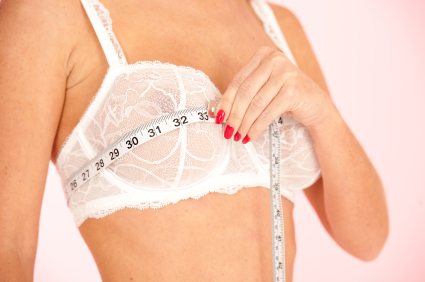What bride doesn’t dream of finding the one? As in the dream wedding dress. . .
Shopping for bridal gowns and bridesmaid dresses is a highly anticipated event. The wedding often revolves around finding the perfect dresses, and fit is as important as looks. Two things to bring: The wedding shoes and undergarments you or your bridesmaids plan to wear; this includes bridal slips if required.
Formal gowns almost always require some alterations for a perfect fit. It is recommended to have a professional seamstress measure or someone other than you. Here’s how to properly measure for gowns:
Be sure to stand naturally. Don’t pull the measuring tape tight and keep your thumb on the inside of the tape. Write down the measurements and remember not to gain or lose too 
If ordering your wedding gown or bridesmaids dresses online, accurate measurements are critical. It is better to round up than down, as gowns can always be taken in. If you’re between sizes for a certain designer, order the larger size. Usually, it is your waist that will determine the size to order. If your waist measurement dictates a larger size than your other measurements, you will need to use it to choose your size and then you will likely need to have the bust taken in, and the hip if the dress is a sheath.
Bust Measurement: Forget about your bra size and measure from the widest part of your back to the fullest part of your bust. Keep your arms down and wear a bra or the undergarments you will wear down the aisle.
Waist Measurement: The natural waistline is usually a couple inches above your belly button and the smallest part of your waist. Position your hands at your natural waist to see where to place the tape.
Hip Measurement: Stand in a natural position with your heels together. For a sheath dress or fitted dress, position the tape around the fullest part of your bottom. For an A-line dress, measure the fullest part of your hips (about 7 inches below the natural waistline).
Dress Length Measurement: This is where your wedding shoes are important for an accurate hemline. For women taller than 5’9”, most designers recommend ordering an extra length dress. Also measure from the waist to hem without shoes, especially if you’ll be changing into flats for the reception.
Nape-to-Waist Measurement: Measure from the base of your neck to your natural waistline, along your back.
Hollow-to-Hem Measurement: Wear your wedding shoes or heels of a similar height. Measure at the base of the neck (just above the collar bone) to the hem. If you’re wearing an A-line skirt or full skirt, be sure to angle the tape to account for the fullness of the skirt. Standard hollow-to-hem can vary between designers.
Other important measurements depend on the type of dress and bodice, such as sleeveless gowns or gowns with sleeves.
Armeye: Measure the tape around the shoulder from the armpit.
Arm Girth: Relax your arm and measure the largest part of your upper arm
Arm Length: Measure from shoulder point to wrist, with arm slightly bent.
Around Neck: Measure around the neck loosely.
Length Arm to Elbow: Measure from the armpit to the elbow.
Nipple-to-Nipple: Measure from bust point to bust point
Shoulder-to-Shoulder: The width from shoulder to shoulder.
Tips: YouTube is a good source to find videos on how to properly measure for bridal gowns and bridesmaid dresses. Also, if you don’t have your wedding shoes, have the style in mind and wear heels with a similar height. Remember, you may be taking your heels off at the reception. Eat something light a couple hours before and be natural during measurements because you want the gown to fit you properly and not be too tight.

